Problem Statement
Problem: Respiratory Complications in Patients Undergoing Interventional Radiological Procedures under Conscious Sedation at Kendall Regional Medical Center.
Associated outcomes:
- Impeded treatment process;
- New hospital acquired diseases;
- Repeated hospitalization.
The problem under discussion is respiratory complications in patients undergoing interventional radiological procedures under conscious sedation at Kendall Regional Medical Center. Research shows that such procedures imply a wide variety of risk factors including the development of hypoxia, hypoventilation, and other respiratory complications. The adverse events result in the negative outcomes for a patient. Thus, they impede the treatment process and minimize the beneficial effect of the undergone procedures. As a result, new treatment strategies need to be worked out, and the possibility of repeated hospitalization increases significantly (Blayney, 2016).

Proposed Change
Proposed change: Improving nurses-patients relations in order to enhance the positive treatment outcomes.
Key elements of change:
- Positive environment;
- Holistic approach;
- Multicultural awareness.
It is assumed that nurses are the main actors of the treatment process; therefore, they are expected to perform the major role in the proposed change. Thus, it is suggested that the incidence of respiratory complications can be reduced with the help of improving the quality of the nurse-patients relations and collaboration. The proposed change structure comprises several critical elements. First and foremost, it is recommended to improve the general hospital environment through expressing a positive attitude towards patients and building up trust-based relationships. Second, it is assumed that a holistic approach that implies an extra active nursess inclusion in the treatment process can help to maintain stronger nurse-patient relations. Lastly, it is recommended to develop multicultural awareness in nurses. In other words, the latter should learn to consider culture-related specificities while planning their communication with patients.

Supporting Theories
The key elements of the proposed change can be supported by the relevant nursing theories:
- Martha Rogers’ Unitary Human Being Theory;
- Jean Watson’s Theory of Human Caring;
- Madeleine Leininger’s Transcultural Nursing Theory.
The basis of the proposed change was worked out on the ground of a thorough analysis of the nursing theories. Upon the literature analysis, three theories were pointed out as the most relevant and their ideas composed the core principles of the proposed change. The idea of creating a positive environment is supported by Martha Rogers’ Unitary Human Being Theory that puts a particular emphasis on the important role of external factors in nurse-patient relations (Wayne, 2014). The element of holistic approach was retrieved from Jean Watson’s Theory of Human Caring that suggests that active inclusion determines the maintenance of trust-based relations between a nurse and a patient (Wayne, 2016). The importance of the multicultural awareness, in its turn, is the pivot point of the Madeleine Leininger’s Transcultural Nursing Theory that focuses on the necessity of considering multi-cultural peculiarities to acquire a better understanding of patients and their needs (Betancourt, 2015).
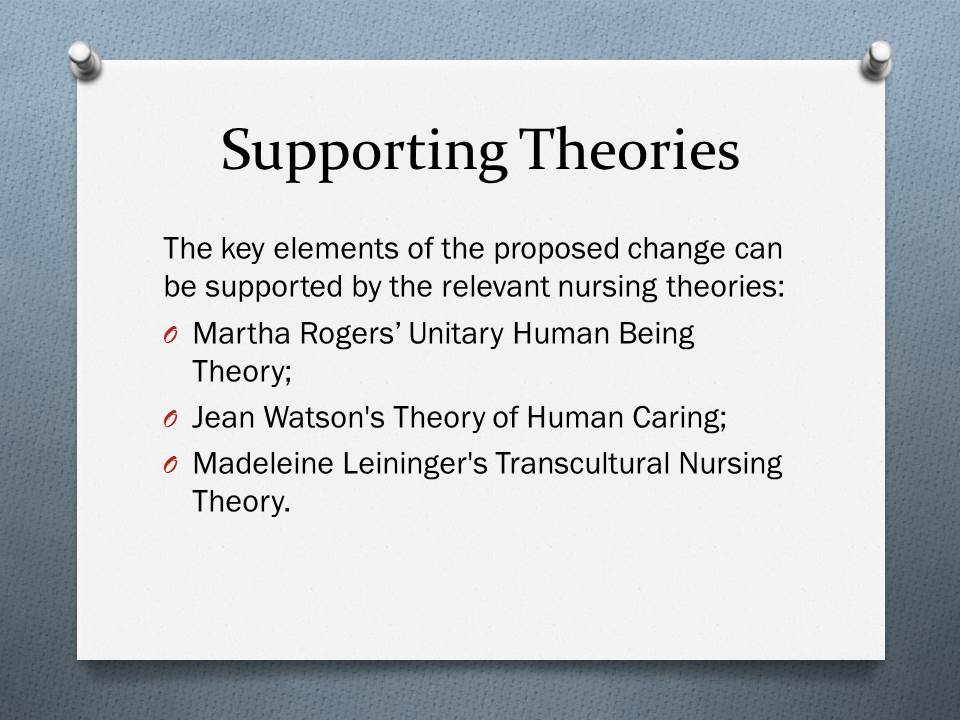
Martha Rogers’ Unitary Human Being Theory
Key ideas:
- Human is an integral part of the environment, and their well-being depends largely on its character;
- The role of a nurse resides in helping a patient reach its maximal potential;
- Positive energy fields produce a healing effect on patients.
The key idea of Martha Rogers’ Unitary Human Being Theory resides in the assumption that human well-being depends on a large number of external factors. Thus apart from the prescribed procedures, nurses are likewise supposed to contribute to maintaining positive relations, transmitting good energy, and helping patients reveal their potential (Wayne, 2014). As a result, these ideas were summarized and integrated into the proposed change structure.
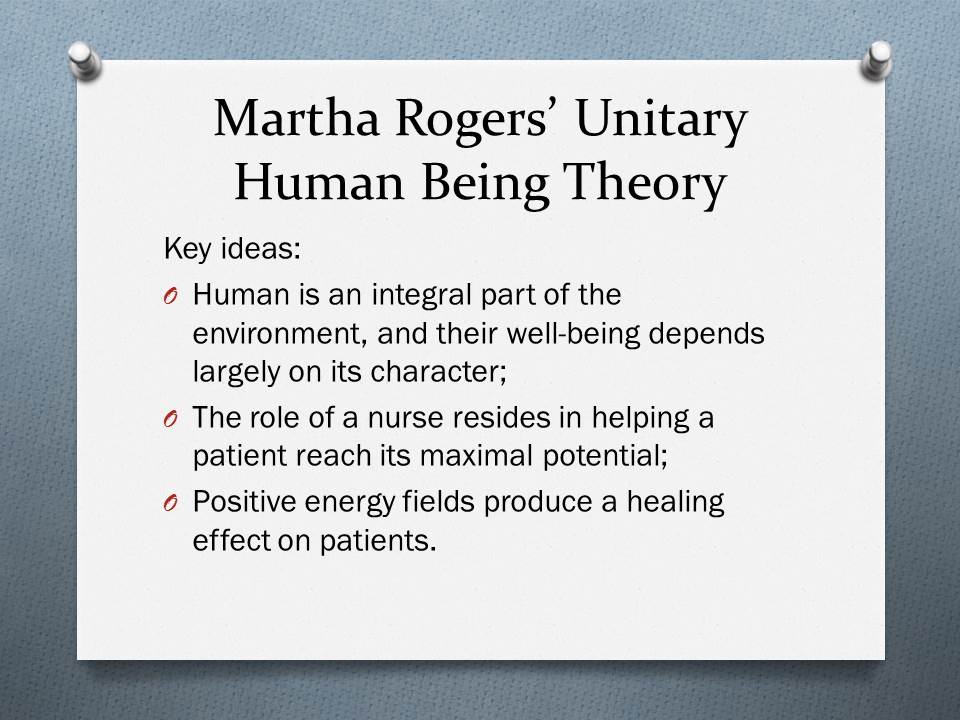
Jean Watson’s Theory of Human Caring
Key Ideas:
- Holistic approach is required to ensure human well-being;
- The key factors that affect the well-being are health, environment, society, and nursing;
- The caring process implies a close interconnection between a patient and a nurse.
According to Jean Watson’s Theory of Human Caring, it is essential to consider a wide variety of both internal and external factors to promote effective healthcare. Hence, first and foremost, a patient needs to receive appropriate emotional treatment and feel respected and understood. Second, the surrounding environment should be favorable for a harmonious recovery. Additionally, the theory implies the need for caring attitude on the part of nurses that are responsible for professional and esthetic care. The process of care is only possible in case of consistent relations between a patient and a nurse (Wayne, 2016). Therefore, upon the analysis of the described ideas, it was decided to include the holistic approach in the proposed change concept.
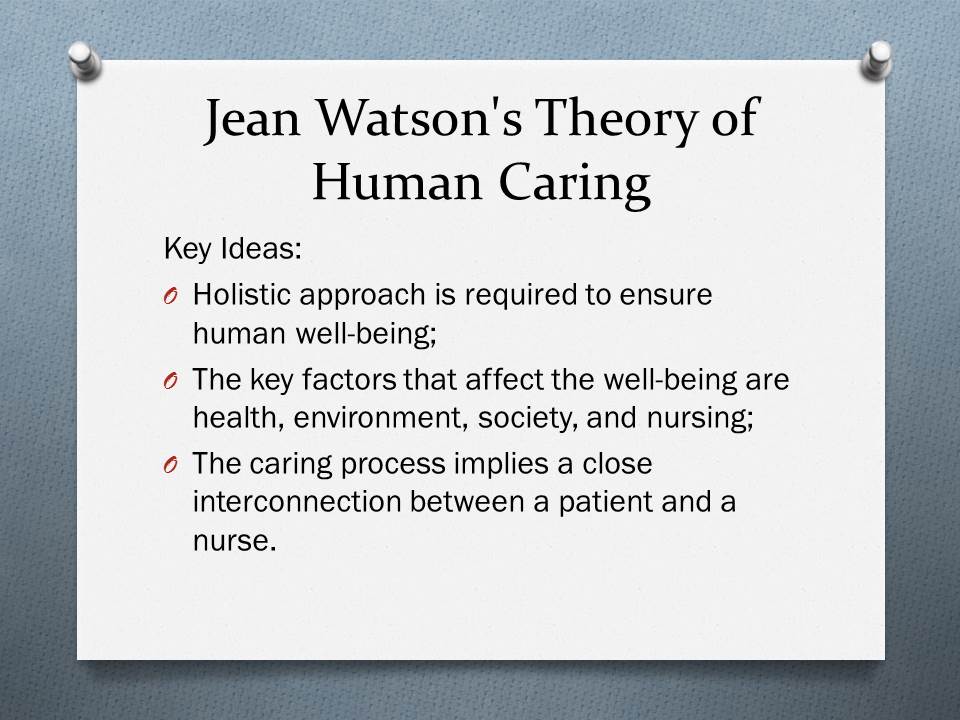
Madeleine Leininger’s Transcultural Nursing Theory
Key ideas:
- Globalization processes have an impact on the healthcare sector;
- Culture-related beliefs and values need to be considered for providing appropriate care;
- Nurses need additional training to develop their multicultural competence.
The key idea of Madeleine Leininger’s Transcultural Nursing Theory resides in developing multicultural competence in nurses, i.e. providing them with the relevant training and education to enhance their awareness of the culture-related specificities in patients. According to this theory, the healthcare sector is impacted by the globalization processes largely – the most vivid example is the number of immigrants in American hospitals that nurses need to serve. As a result, it is essential to consider the culture-related beliefs and traditions to build consistent nurse-patient relations (Betancourt, 2015). The described ideas were considered rational and relevant to the general change framework, so they were included in the change strategy.
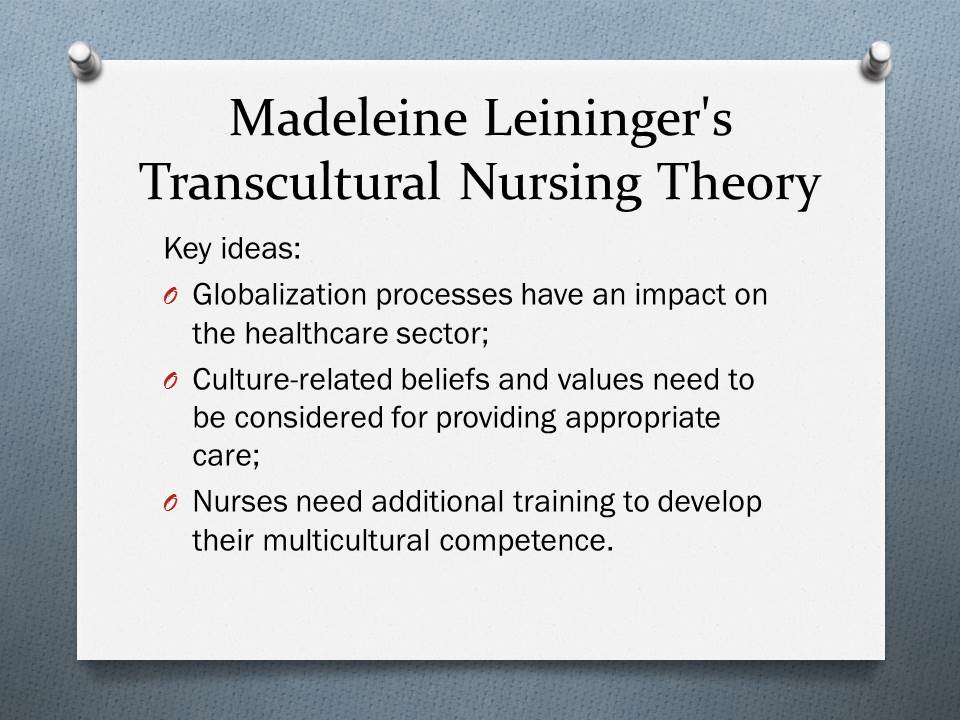
Proposed Change Strategies
Proposed strategies:
- Communication;
- Education;
- Collaboration.
It is proposed that the implemented change is based on the three core strategies. First and foremost, it is considered vital to enhance effective communication both within nurse-patient and nurse-colleagues relations. Second, it is suggested that education and relevant training are likely to assist in improving nurses’ professionalism and helping them to adopt useful communication techniques for care provision. Lastly, it is assumed that effective collaboration between healthcare systems is likely to facilitate the change implementation process.

Communication
Pros:
- Helps to motivate employees to support the change;
- Assists in informing stakeholders about the shared value that the change implies;
Cons:
- Effective communication techniques require additional training.
The key aim of the communication strategy is to explain the need for change to the employees and motivate them to participate in it. Research shows that in many cases, employees’ resistance to change is determined by the lack of understanding the change and the fear of its outcomes (Persily, 2013). As a result, it is proposed to design an effective communication strategy that would assist in persuading stakeholders in the change relevance and aligning their interests with common values. One of the effective communication tools that can be applied to enhance the strategy is storytelling. This technique helps to communicate the change to key stakeholders in an informal, friendly manner (Gill, 2011).
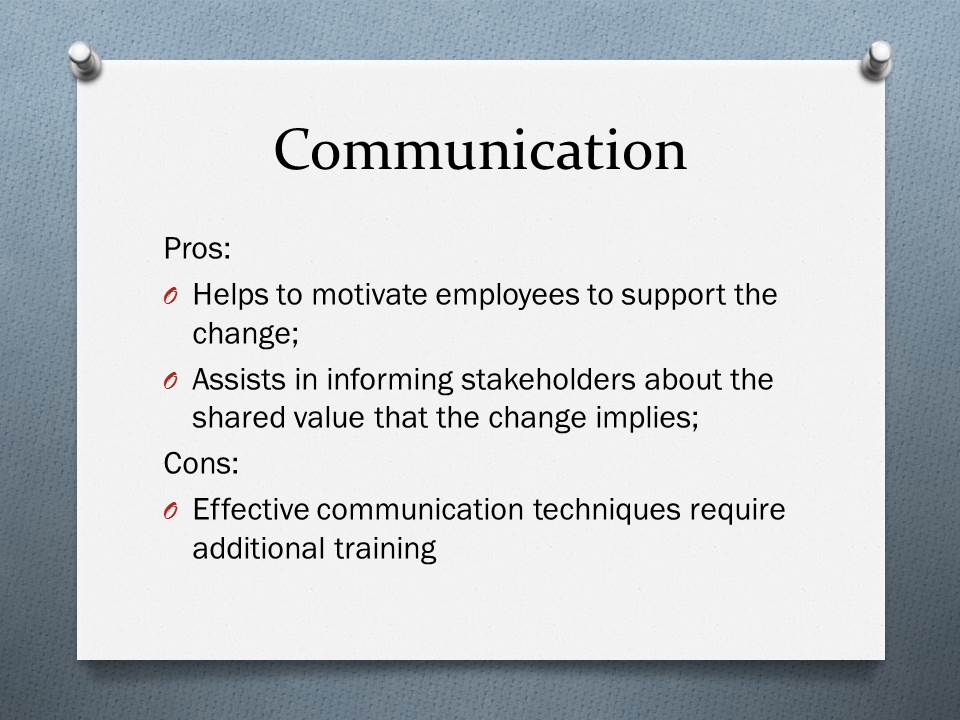
Education
Pros:
- Eliminates the lack of skill barrier;
- Ensure stronger employees’ involvement in the change processes.
Cons:
- Requires additional expenses.
One of the key barriers to change implementation is the lack of the relevant skills and knowledge in the employees. These factors result in the development of ungrounded fears and concerns that increase the resistance to change. Nurses are afraid they are unable to fulfill new obligations successfully, and, they, therefore, prefer to distance themselves from the reforms (Persily, 2013). In order to avoid the described complications, it is proposed to develop a consistent education strategy that will provide the employees with the relevant training and encourage their active involvement in the improvement processes.

Collaboration
Pros:
- Helps to optimize operation flaws;
- Ensures strategy alliance with corporate values.
Cons:
- Requires the collaboration with a large scope of agents.
Practice shows that an inconsistent structure functioning can be a barrier to performing an effective change implementation. Organizations are likely to fail in introducing improvements in case their organizational structure is not interconnected properly. Otherwise stated, they cannot succeed if there are critical gaps in the operation flow, and the communication between departments is inconsistent. A well-designed collaboration strategy can help to eliminate the described problems (Persily, 2013). Even though this strategy is hard to implement due to a large number of agents involved, the positive outcomes will overweight these minor challenges.

Incorporated LEAN Principles
Incorporated principles: Treating stakeholders as partners.
Supporting strategies: communication and collaboration
Staff empowerment and growth: Supporting strategy: education
The proposed strategies imply a couple of important lean principles incorporated in them. Thus, the communication and collaboration strategies target to enhance the principle of appropriate employees’ treatment, i.e. the principle of treating them as partners rather than subordinates. The education strategy, in its turn, assists in promoting the principal of professional development, i.e. the growth and empowerment of employees.
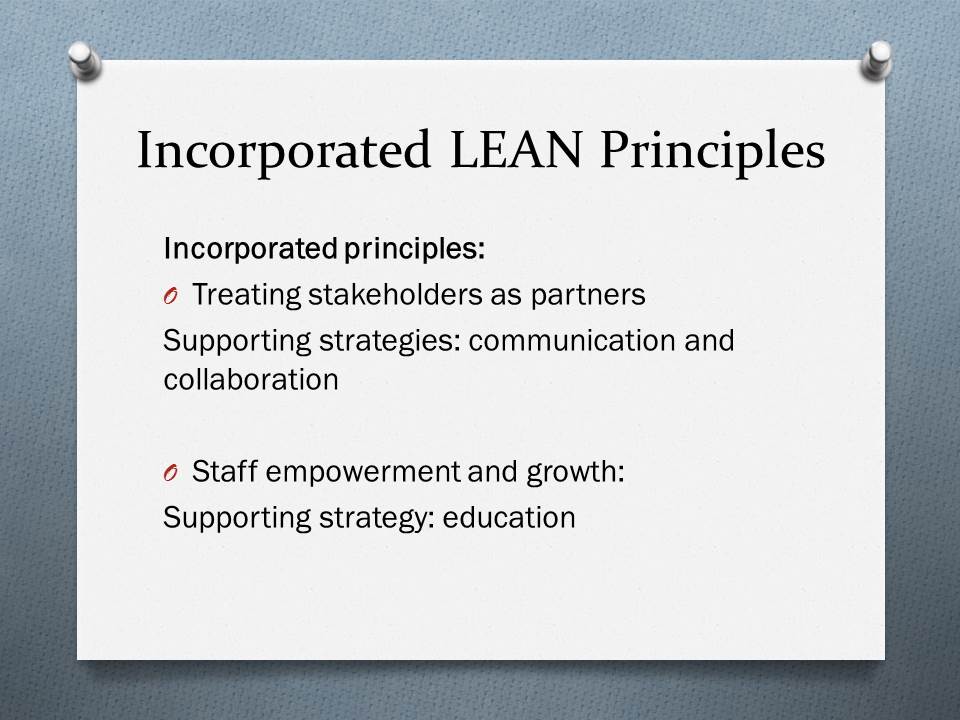
Treating Stakeholders As Partners
Basic aspects:
- Employees are encouraged to participate in decision-making;
- Employees are informed about all the details related to the change implementation.
Related outcomes:
- Strong and productive collaboration;
- Enhanced trust and motivation.
One of the key ideas of both communication and collaboration strategies resides in establishing healthy and productive relations with the employees that are supposed to be the major drivers of the proposed change. Thus, it is considered critical to choose the appropriate treatment method that will help to increase their motivation and encourage them to participate actively in the change processes. Otherwise stated, these strategies comprise the principle of partnership treatment, according to which, employees should be equal participants in the change process that are aware of all the essential details and allowed to contribute to the common decision-making (Persily, 2013).
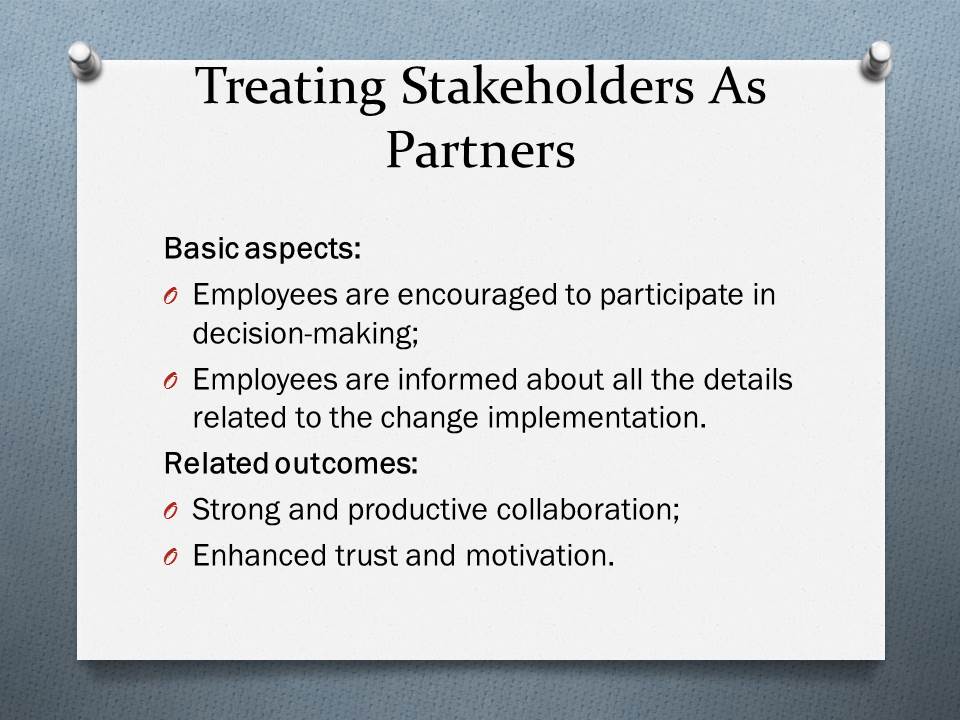
Staff Empowerment And Growth
Basic aspects:
- Employees receive the training essential to ensure effective change implementation;
- The education process does not stop when the change is implemented.
Associated outcomes:
- The results of the change are constantly revised and improved along with the employees’ competence.
The key target of the education strategy is to ensure that the employees possess the knowledge and skills essential to perform the effective change. In the meantime, the strategy likewise implies another lean principle, i.e. staff empowerment and growth. It means that the training will be provided not only in the course of the change implementation but on the regular basis. It is expected that the adherence to this principle will help to ensure constant improvement of the change outcomes.
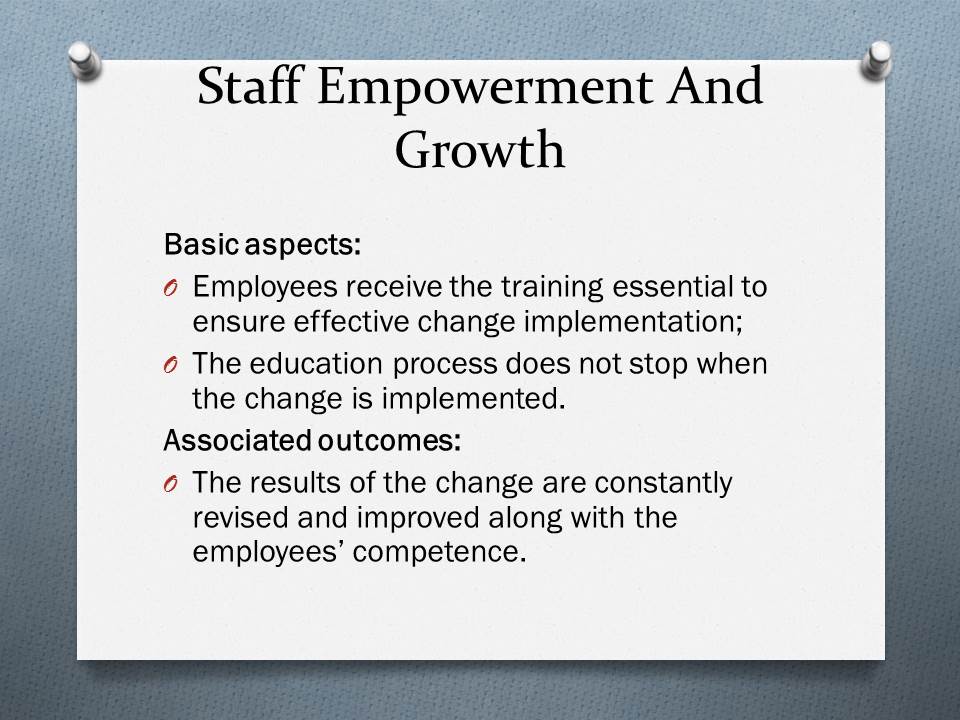
Applying Teamwork To Promoting The Change
Proposed methods:
- Common training;
- Common discussions;
- Common planning and regular revisions.
Advantages:
- Optimized operation flow;
- Clear distinction of responsibility scope.
It is considered important to make teamwork the major format of the change promotion. In other words, it is expected that the most favorable results might be obtained in case the processes are carried out by small groups of employees, each of which has its leader responsible for motivation and inspiration. Practice shows that this format of change implementation works effectively within medium-sized health care settings (Persily, 2013). The collaboration between teams can be organized through joint seminars and training. Team leaders might be likewise involved in the common discussions to participate in the decision-making and planning.
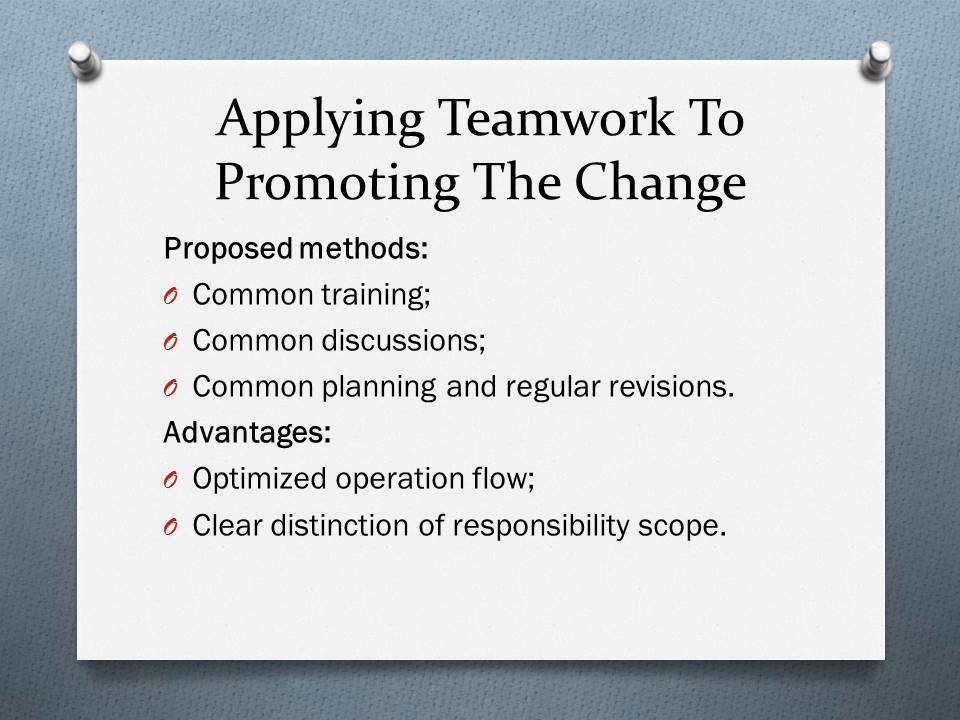
Reference List
Betancourt, D. A. (2015). Madeleine Leininger and the Transcultural Theory of Nursing. The Downtown Review, 2(1), 1-7.
Blayney, M. R. (2012). Procedural sedation for adult patients: an overview. Continuing Education in Anesthesia, Critical Care & Pain, 12(4), 176-180.
Gill, D. R. (2011). Using storytelling to maintain employee loyalty during change. International Journal of Business and Social Science, 2(15), 23-32.
Persily, C. A. (2013). Team Leadership and Partnering in Nursing and Health Care. New York, New York: Springer Publishing Company.
Wayne, G. (2014). Madeleine Leininger’s Transcultural Nursing Theory. Nurses Labs. Web.
Wayne, G. (2016). Jean Watson’s Theory of Human Caring. Nurses Labs. Web.